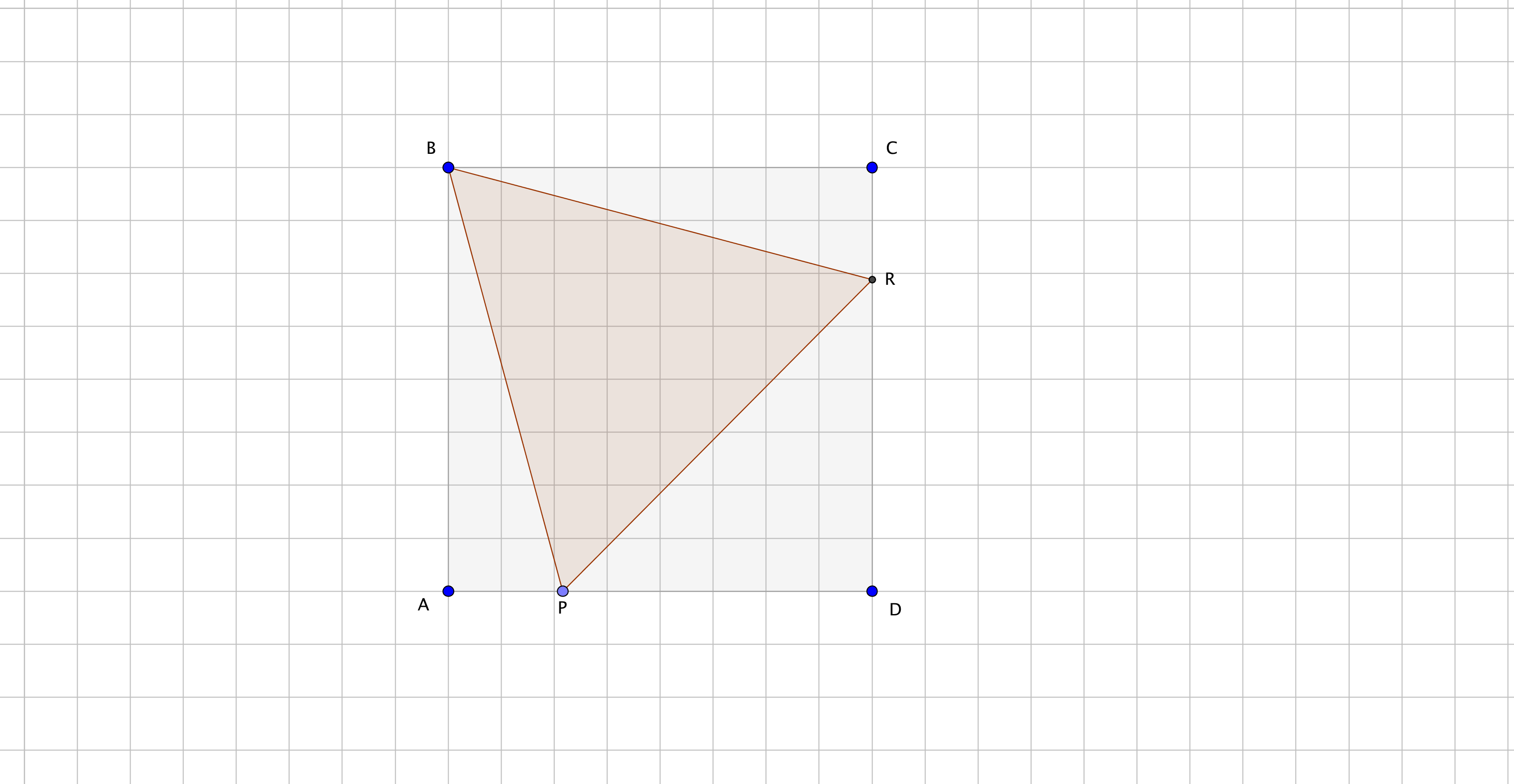As per given figure #DeltaBCR ~=DeltaABP#
Since #/_BCR=/_ABP=90^@->"angle of a square"#
#"hypotenuse "BR ="hypotenuse "BP#
( sides of equilateral #DeltaBRP#)
#AB=BC->"sides of square ABCD"#
So #/_CBR=/_ABP#
Using trigonometry
In triangle BCR
#/_CBR=/_ABP=1/2(/_ABC-/_PBR)#
#=(90^@-60^@)/2=15^@#
and #/_BRC=90^@-15^@=75^@#
If the length of each side of the equilareral triangle BPR be a,then
#BC=asin/_CBR=acos15^@#
#CR=asin/_CBR=asin15^@#
For #DeltaPRD#
#/_PRD=(180-/_BRC-/_BRP)#
#=180^@-75^@-45^@=45^@#
So #PD=DR=PRcos45^@=acos45^@=asin45^@#
Now
#(DeltaBCR)/(DeltaPRD)#
#=(cancel(1/2)xxCRxxBC)/(cancel(1/2)xxPDxxDR)#
#=(asin15^@xxcos15^@)/(acos45^@xxasin45^@)#
#=(2cos15^@xxsin15^@)/(2cos45^@xxsin45^@)#
#=sin30^@/sin90^@#
#=sin30^@=1/2#
Without using trigonometry
We have shown above #DeltaBCR ~=DeltaABP#
So CR=AP
Now
#DR=CD-CR=AD-AP=DP#
Applying Pythagoras theorem for #DeltaPRD# we get
#PR^2=DP^2+DR^2=2DR^2#
#=>BR^2=2DR^2->"since "PR=BR#
Niw applying Pythagoras theorem for #DeltaBRC# we get
#BR^2=BC^2+CR^2#
So #2DR^2=BC^2+CR^2#
#=>2DR^2=BC^2+CR^2#
#=>2DR^2=CD^2+CR^2#
#=>2DR^2=(CR+DR)^2+CR^2#
#=>2DR^2=CR^2+DR^2+2CR*DR+CR^2#
#=>2DR^2-DR^2=2CR^2+2CR*DR#
#=>DR^2=2CR^2+2CR*DR#
#=>1/2*DR^2=CR^2+CR*DR#
#=>1/2*DR^2=CR(CR+DR)#
#=>1/2*DR*PD=2*1/2*CR*CD#
#=>1/2*DR*PD=2*1/2*CR*BC#
#=>DeltaPRD=2*DeltaBCR#
#=>(DeltaBCR)/(DeltaPRD)=1/2#


